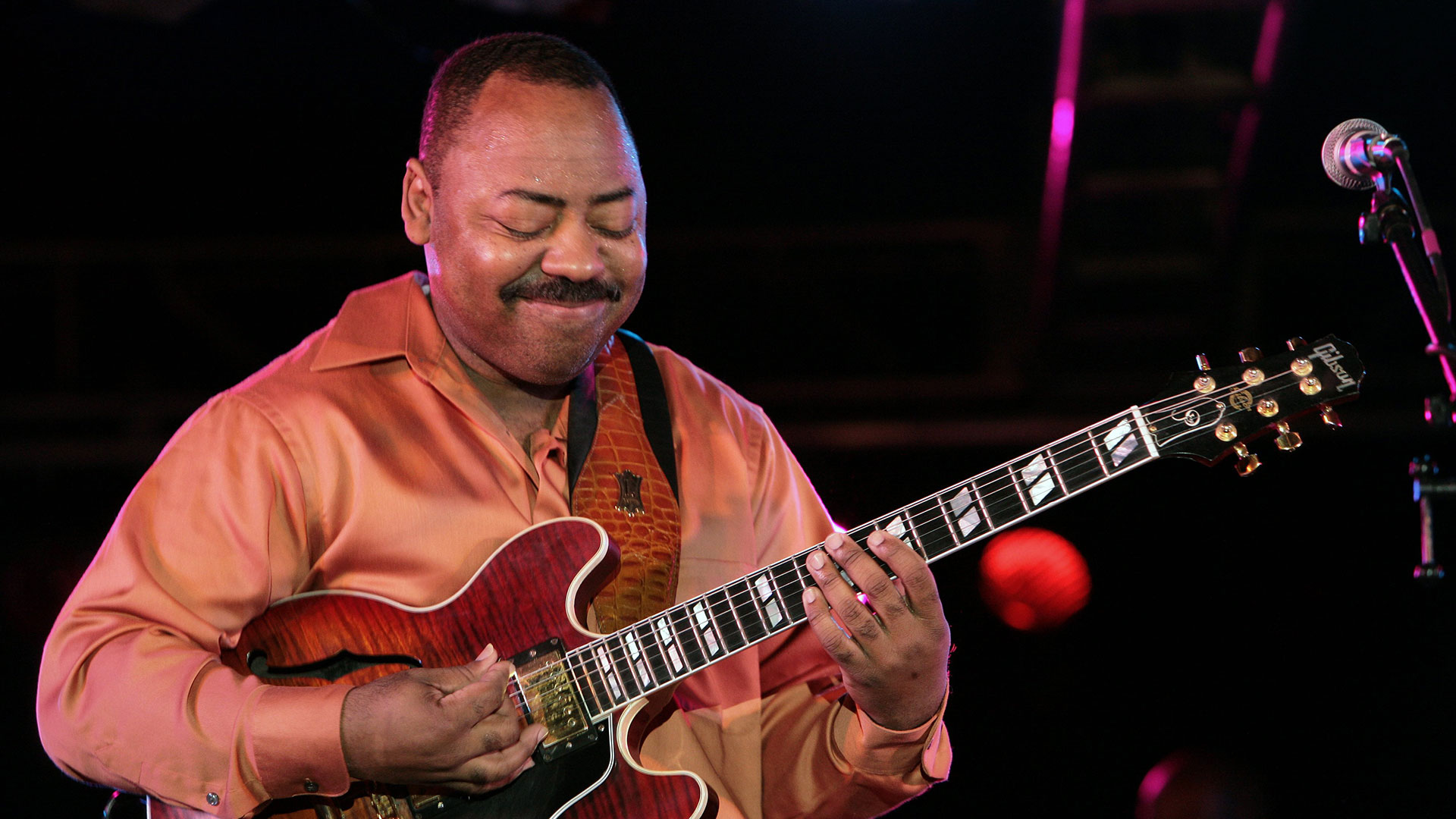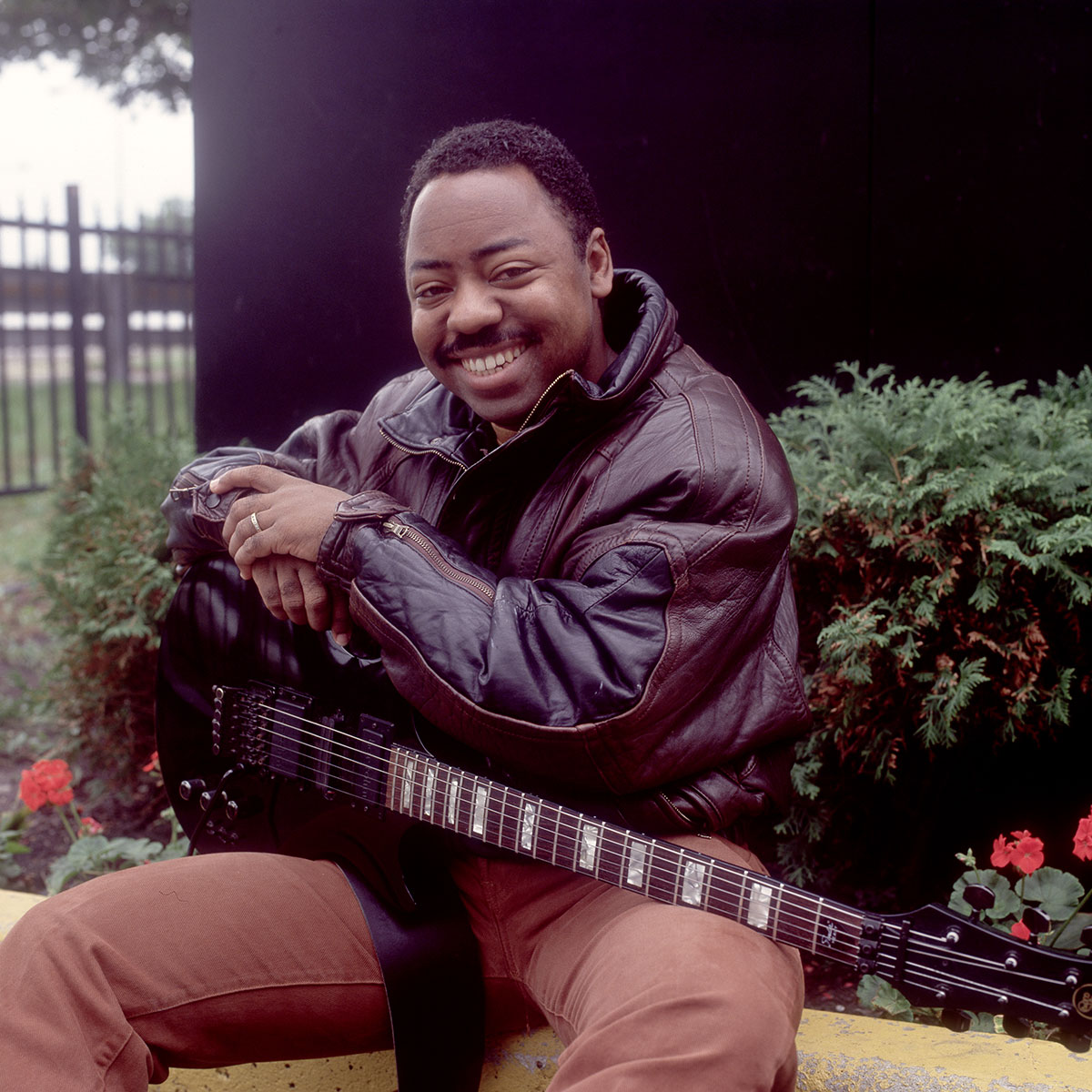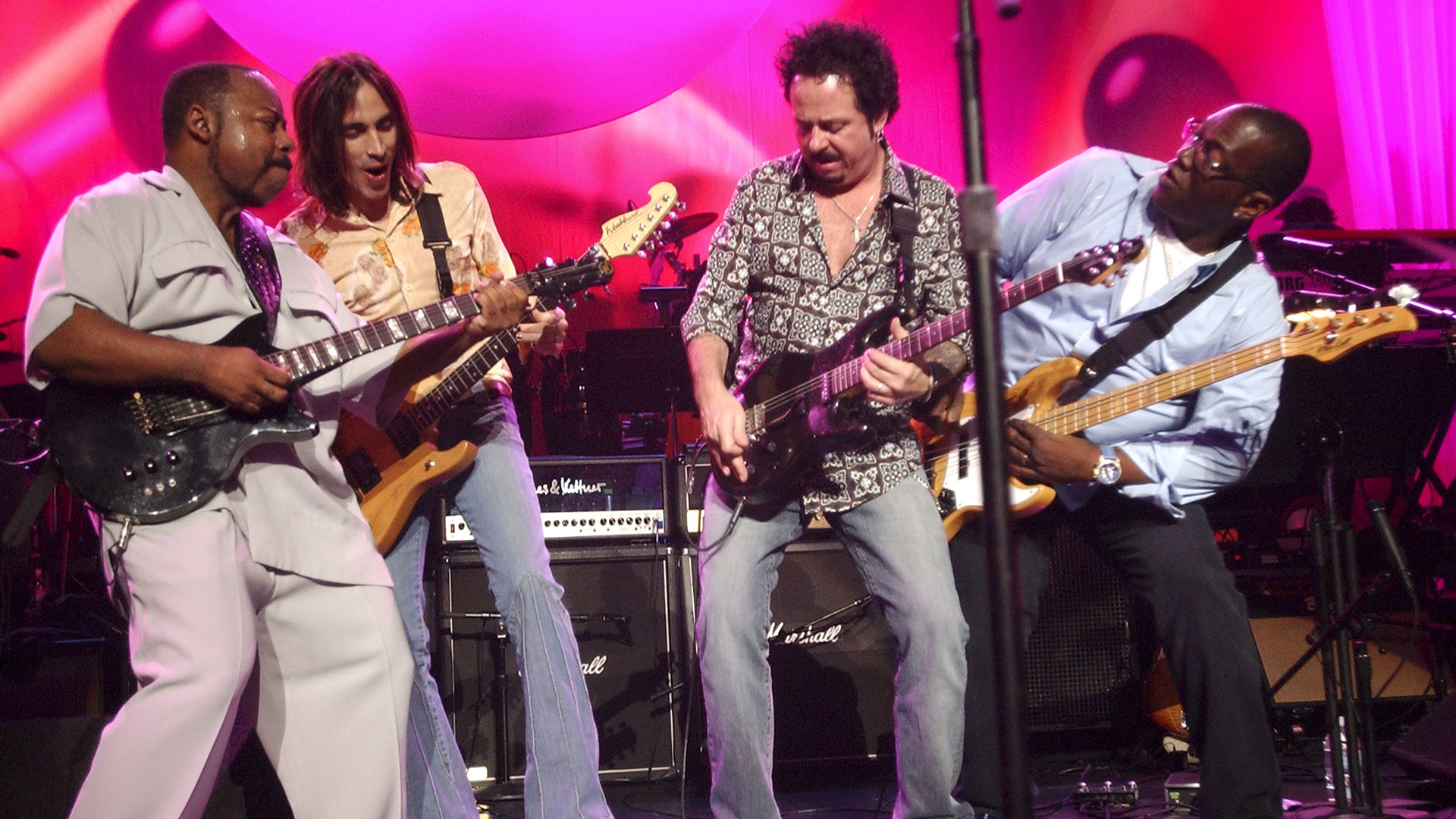“Beat It was interesting. Of course, Eddie Van Halen did the solo. But the rest of the guitars were Steve Lukather and myself...” Session ace Paul Jackson Jr. on how he became Michael Jackson and Quincy Jones’ go-to guitarist
From meeting Michael Jackson at 19, to playing with B.B. King and on Daft Punk’s Get Lucky, his career has thrived on variety – but the session great tells us it starts with your ears, not your hands...

Paul Jackson Jr. has hooked up with almost everyone, although usually on a behind-the-scenes basis. Remember Michael Jackson’s Beat It? That’s his rhythm work alongside Steve Lukather. And Daft Punk’s Get Lucky? That’s Jackson too, along with Nile Rodgers.
“You get your report card in kindergarten and it says, ‘Plays well with others,’” he tells Guitar World. “You have to cooperate and listen well. You realize the singer is always gonna be first.
“You have to adjust your parts so they augment and accentuate what’s going on and make the track feel good. You have to compliment what’s happening vocally, instead of playing a bunch of stuff where it’s gonna get in the way. They’ll just end up turning that down – or turning it off.”
He says he’s “not really proud, but fortunate” to have enjoyed a stack of career successes – so much so that he refuses to boil his experiences down to a singular high point.
“I’m grateful that I’m still doing things like the Oscars, which I’ve done four times. I’ve done the Grammys, the Emmys, nine seasons of American Idol and The Tonight Show.
“I’m honored, blessed, and grateful – but the thing I’m most honored by is that after this amount of time, people still like the way that I play guitar.”
Was session work a planned route for you, or did you fall into it?
Get The Pick Newsletter
All the latest guitar news, interviews, lessons, reviews, deals and more, direct to your inbox!
“It’s something I aspired to do. I met Lee Ritenour when I was 15 and saw what he was doing; so my trajectory was to become the world’s greatest session player. I had a lot of help from Lee and Ray Parker Jr., who, at the time, was getting out of sessions to focus on a solo career. I had a lot of help from a lot of people.”
How did you develop your signature style and tone?
“Which one are you talking about? I’ll use a quote from the great drummer, Ndugu Chancler, who I worked with a lot. I asked him, ‘When are you gonna let me play in your band?’ He said, ‘When you start playing like Paul Jackson Jr.!’
“It’s a lot of practice, listening, soul-searching and praying. You take everything from everyone you listen to until it pops into your own style. All of that ended up being the Paul Jackson Jr. tone, if you will.”
What gear were you primarily working with when you started?
“I had a Gibson ES-335 and a Fender Telecaster that my folks bought me. And then I had a pedalboard my dad made: a Mu-Tron Envelope Filter, a Mu-Tron Octave Divider, a flanger, Echoplex, and a Dunlop Cry Baby Wah. It grew from there – and obviously it’s still growing.”
Was that the gear you brought into your early sessions with Donald Byrd?
“That was the same gear. The way I got on those sessions was very interesting: I was doing another record with the great Wah Wah Watson, and he says, ‘Hey, Paul, you wanna play on a Donald Byrd record tonight?’ I said, ‘I would love to.’
“He said, ‘Show up at Factory Sound at 7 o’clock, and you’ll be on the record.’ I said, ‘Does Donald know I’m coming?’ Wah Wah said, ‘No, but it’ll be okay.’ And so, basically, he just put me on the record Thank You… For F.U.M.L (Funking Up My Life). That’s how I ended up working with Donald Byrd.”
Did you get to pick Donald’s brain?
“Not really pick his brain, but he liked what was coming out of the guitar section. I was really young so I was taking a lot of cues from Wah Wah. I was basically a sponge, soaking up what I could.”
Around a year later, you worked with B.B. King on his record Take It Home. How did that happen?
“I started doing some sessions with keyboardist Joe Sample, who said, ‘I’d like to see how you work in other situations.’ I started recording with the Jazz Crusaders, who were producing B.B. King, so I ended up on those sessions.”
What was the key to finding space alongside B.B.?
“Listening – always listening. Your first musical tool is your ears. You have to listen to what the other person is doing; listen to their approach, their style and their space. Then you can make the adjustments accordingly.”
Around that same time, you were on Donna Summer’s Bad Girls record. Is that you playing on Hot Stuff?
The solo on This Place Hotel is what Michael Jackson actually sang to me
“Oh, yeah – I did play on Hot Stuff. By that time, I had my Gibson Les Paul Standard, so I used that. And I used my Paul Rivera modified Fender Deluxe and cranked it all the way up. That’s pretty much what I used on Hot Stuff; it was just the bridge pickup, and I came up with the part pretty quickly.”
What’s the trick to seamlessly transitioning from jazz to blues to disco?
“The trick is listening and working enough in each genre to where you can be convincing. It’s difficult to be an expert in all genres, but it’s not difficult to play convincingly in all genres.
“You’ve gotta remember all these guys who did sessions were originally jazz guys. All of them are from New York, Chicago, Philly and LA; so it’s about listening and adjusting to the situation.”
Your work with The Jackson 5 opened the door for your work with Michael Jackson. Could you tell he was going to be a star?
“I met Michael when he was about 19 and he was already a star. We worked on the Destiny record, and I ended up doing a lot of work with Jermaine Jackson, writing, producing, and playing guitar with him.
“I worked on a song called This Place Hotel with them. We were in the studio and Michael said, ‘I want you to play something.’ He puts in a little cassette tape, and sings the solo and records it. I listened to the the tape and took it phrase by phrase, and the solo on This Place Hotel is what Michael actually sang to me.”

Give us the fly-on-the-wall perspective of working on Thriller, which also featured Eddie Van Halen and Steve Lukather.
“Actually, working on Thriller didn’t have a lot to do with Michael. It had more to do with my association with Quincy Jones. I’d worked on a record by James Ingram called It’s Your Night; and after that Quincy was doing Thriller, so he called me in.
“Beat It was interesting because there was a demo that, I think, guitarist David Williams had played on. What I did was I doubled the bassline, the fifth, the chorus and the verse. Luke played on a secondary part in the verse; and, of course, Eddie Van Halen did the solo. But the rest of the guitars were Steve Lukather and myself.”
Were you in the studio with Luke or Eddie?
“No, I never saw them. But it depends on the session. I’ve done things with Luke where we’re in the studio at the same time, and I’ve sessions where there’s three players in on the session. It just kind of depends on the music and the approach.”
What gear did you use during the Thriller sessions?
“I had a Valley Arts Rosewood Strat, another ES-335 and my Les Paul too. I had the modified Deluxe, and I think a compressor and an ADA Stereo Tapped Delay, which like a slap-back, flanger, phase-shifting kind of thing.”
Did Michael give much input as far as guitar sounds, or was it mostly communicated through Quincy?
Daft Punk felt what I came up with was so integral to that song that I actually got a writer’s credit
“On that record, no. There’s a song called The Lady in My Life, where Rod Temperton wanted me to play some octaves; so I did that with my thumb, like Wes Montgomery. And there was a rhythm part I came up with on P.Y.T. (Pretty Young Thing), where Quincy just put me in the studio and said, ‘Create.’ I came up with all those parts.”
Did your approach and gear change much during the Bad sessions when you recorded songs like Dirty Diana and Leave Me Alone?
“Every situation was different. With Leave Me Alone I came up with the part, but I don’t remember it that well. Dirty Diana – that was a part the arranger, Jerry Hey, wrote out. I tuned my guitar down from E to C#, and he came up with this part that was really, really cool.”
Your association with Michael was strong into the ‘90s, as you played on Dangerous, HIStory, and Blood on the Dance Floor: HIStory in the Mix. Did your rig evolve to reflect the times?
“Yeah – by then, I probably had my second Bradshaw rack system. I couldn’t tell you everything in there, but I remember that I had some Mesa Boogie stuff and I had the Stereo Tap Delay. I also had a tri-stereo chorus and a dbx 160x compressor. I was pretty much exclusively using Bob Bradshaw to build my rigs back then.”

What kept Michael coming back to you for his records?
“The Lord blessed me to be in a situation where what I did with Michael was very successful. It’s the old adage: If it ain’t broke, don’t fix it – I was fortunate enough to be associated with Michael on records that did very, very well.”
Pushing forward to 2013, you played on Daft Punk’s Random Access Memories, which also features Nile Rodgers. How was it decided who would play on what?
“I wasn’t in the studio with Nile. I was in with the two guys from the group, Thomas Bangalter and G-Man [Guy-Manuel de Homem-Christo], and they said, ‘Here’s the song – just create.’
“One of them was Get Lucky, which Nile is on, and one was Give Life Back to Music – they felt what I came up with was so integral to that song that I actually got a writer’s credit. It was just about listening to what was there and creating.”
Can you remember what gear you used during the Daft Punk sessions?
“That was a later iteration of the Bradshaw rig. I was using a Tri-Ax preamp and a dbx 160X compressor. Amp-wise, I had a Mesa Boogie 20/20 Dyna-Watt Power Amo – two of those. I had a Fryette power amp that’s 50 watts a side; so depending on whether I wanted a lot of clean headroom or a little crunch, I would pick which power amp I’d use.”
Could you reduce your rig to one guitar, one amp and one pedal?
“The one amp would be easy. Rivera makes an amp called the Stage IV now, which is interesting because it’s like the Deluxe I modified in the ‘70s and ‘80s, but with channel-switching and an effects loop on both channels.
Practice and hone your craft. Do something that’s follow-worthy, and people will follow you
“The one pedal would probably be an MXR Dyna Comp compressor – I use a lot of compression on a lot of things. The cool thing is you can crank it up if you wanna use it as a clean boost. And you can also set the amp to overdrive or distortion, and use the compression as a gain down.
“If I could only use one guitar, it would probably be the PRS Fiore, which is the Mark Lettieri model. I put a Seymour Duncan mini-humbucker in mine at the neck position; so I can get the funk sound with the bridge and neck, and then I get the Strat sound with the bridge and middle pickup; and then, a blues sound, because of the mini-humbucker in the neck.”
What’s your best advice for someone looking to get into your line of work?
“Be prepared, listen, and learn different styles and techniques. You’re gonna have to use all of them. You’re gonna play country, rock ‘n’ roll, R&B, neo-soul and classical.
“The idea is practice, practice, practice. I had a young lady ask me, ‘How do I get more followers on Instagram?’ I said, ‘Do you know who Justin Bieber is?’ She said, ‘Yeah…’ I said, ‘Do you think he has any problems getting followers?’ She said, ‘No.’ I said, ‘That’s because he’s doing something that’s follow-worthy.’
“Practice and hone your craft. Do something that’s follow-worthy, and people will follow you. In the words of Suga Free by DJ Quick, ‘If you stay ready, you ain’t got to get ready.’
“That’s one piece. The second piece is – anything you endeavor to do, work hard at it as if there was no God or divine help. And if you’ve done everything that you can do, trust God like you haven’t worked at all.”
- Jackson’s most recent EP, Stompin’ Willie Presents More Stories, Part 1, is on sale now.
Andrew Daly is an iced-coffee-addicted, oddball Telecaster-playing, alfredo pasta-loving journalist from Long Island, NY, who, in addition to being a contributing writer for Guitar World, scribes for Bass Player, Guitar Player, Guitarist, and MusicRadar. Andrew has interviewed favorites like Ace Frehley, Johnny Marr, Vito Bratta, Bruce Kulick, Joe Perry, Brad Whitford, Tom Morello, Rich Robinson, and Paul Stanley, while his all-time favorite (rhythm player), Keith Richards, continues to elude him.









![[from left] George Harrison with his Gretsch Country Gentleman, Norman Harris of Norman's Rare Guitars holds a gold-top Les Paul, John Fogerty with his legendary 1969 Rickenbacker](https://cdn.mos.cms.futurecdn.net/TuH3nuhn9etqjdn5sy4ntW.jpg)







